Tainted Grail: The Fall Of Avalon
Review: Impressions after completing the Fall of Avalon campaign solo
April 25, 2020 by danlee
This Review Was Edited
Related Review Types
Supported by (Turn Off)
Supported by (Turn Off)
I just completed Tainted Grail: Fall of Avalon. I played it solo, usually doing one chapter per week. Chapters averaged two to three hours each, for about 30 to 45 hours of game play.
I would describe Tainted Grail: Fall of Avalon as a role-playing board game. You control up to four characters who set out to save their village and then become embroiled in the politics of their island, Avalon. Each of the 15 chapters can be played as its own game session or you can just keep playing one after the other for as long as you have the time. A save system allows you to pack up at any time (this takes about 5 minutes) and then resume where you saved after about a 10 minute setup time.
Solo play
The game works perfectly well played solo. I did have to tone the difficulty down a bit early on - but once I'd played about five chapters I'd actually got better at playing the game and think it would work fine with the game's normal difficulty. Each of the four characters have one sub-plot each which you will miss out on by only fielding one character, but you could get around this by swapping out characters between chapters or perhaps running with two character's at once. The only reason I didn't do this is I didn't have the space on my table for two sets of character cards.
Art direction
The art style is a dark, almost blurry approach that fits the dark fantasy setting very well.
Components
The game makes extensive use of cards and many of them get shuffled a lot so I would recommend deck protectors. The game comes with figurines for the main characters, main protagonist and the menhir statues that you must use to reveal the map. These are available pre-shaded with sundrop. This is Awaken Realms method of pre-colouring and shading the models so they don't look like bare plastic out of the box. All my models were the sundrop version and I think it made the game look a lot better without me having to do the painting myself. All models are one piece. The game has two other key components, red and purple plastic cubes which are used to track most variable in the game and special coins that act as counters (they are numbered around the edge) and can be used for 50:50 chance mechanics. Both worked well.
Playability
The mechanics in this game are very easy to pick up. I rarely consulted the rule book after the first few chapters. Of particular note are the combat and diplomacy mechanics. Each character has their own combat and diplomacy decks which represent their skills in encounters. You play these cards in sequence and by linking up symbols that tie into your character's attributes you deal damage (in combat) or persuade your opponents (in diplomatic exchanges). This eliminates the need to depend on die rolls. The only luck is the luck of the cards you draw into your hand. You have many opportunities to tailor your deck as you level up or take skills which allow you more control over your hand, so you never feel you are the victim of luck and the encounters are very tactical. The skills you have are tailored to your character too which is a great touch. I played as Beor who is short tempered and physically strong, so his diplomatic options included cards such as "Feat of Strength" and "Show Off".
Replayability
From the amount of tick-boxes I had filled on my save sheet by the end of the campaign I know that I covered half (at best) of the content in the campaign. Your decisions soon start to shape the world around you so to experience every event from all available angles you would need two or three play-throughs. If you were playing with friends you would also get more variety from party dynamics and role-playing opportunities so you could get even more out of the game.
Writing
This is a story rich role-playing board game, so there is a lot of reading involved in the game. The game is very well written and I never noticed that the game was written by non-English native speakers. I spent a lot of time exploring areas over and over again being thorough to cover every option available. Sub-plots cover the bizarre, the sad, horror and mysteries (can't think of any happy sub-plots now that I think about it). I also encountered a couple of Easter eggs for fans of the fantasy genre. I'd say the writing is superb.




































![Very Cool! Make Your Own Star Wars: Legion Imperial Agent & Officer | Review [7 Days Early Access]](https://images.beastsofwar.com/2025/12/Star-Wars-Imperial-Agent-_-Officer-coverimage-V3-225-127.jpg)






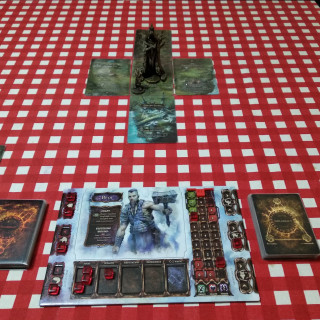
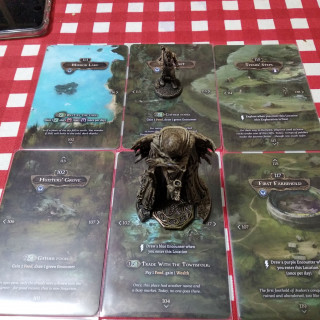
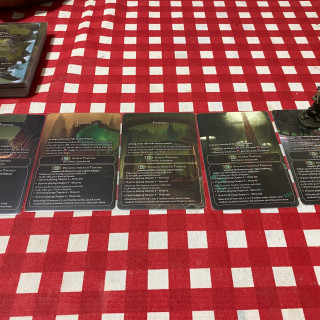
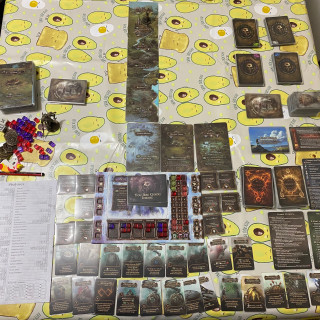
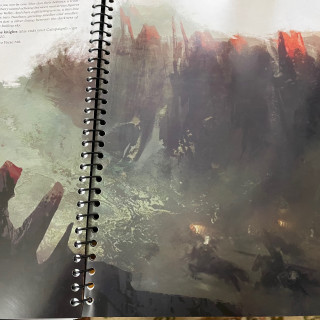


Thanks for taking the time to write such a comprehensive review. I was really on the fence and in the end decided against backing this game, as I have so many others still unplayed. But glad it was good.
Do you think you will actually play it a second time, to try to do it differently and experience stuff you missed? Or are you now satisfied that you’ve finished with it?